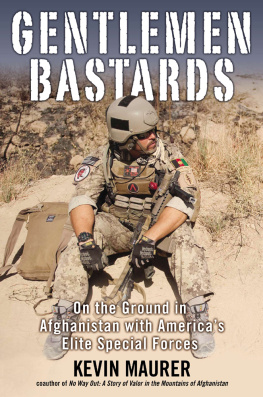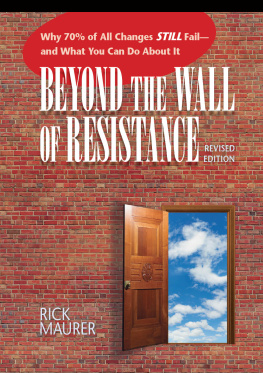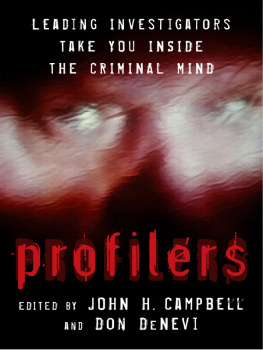WHIZ MOB
WHIZ MOB
A Correlation of the Technical Argot of
Pickpockets with Their Behavior Pattern
BY DAVID W. MAURER

ROWMAN & LITTLEFIELD PUBLISHERS, INC.
Published in the United States of America
by Rowman & Littlefield Publishers, Inc.
A wholly owned subsidiary of
The Rowman & Littlefield Publishing Group, Inc.
4501 Forbes Boulevard, Suite 200, Lanham, Maryland 20706
www.rowmanlittlefield.com
PO Box 317, Oxford, OX2 9RU, UK
Copyright 1964 by College and University Press Services, Inc.
First Rowman & Littlefield edition published in 2003
All rights reserved. No part of this publication may be reproduced, stored in a retrieval system, or transmitted in any form or by any means, electronic, mechanical, photocopying, recording, or otherwise, without the prior permission of the publisher.
British Library Cataloguing in Publication Information Available
Library of Congress Catalog Card Number 64-13962
ISBN: 978-0-7425-3351-6
Printed in the United States of America
 The paper used in this publication meets the minimum requirements of American National Standard for Information SciencesPermanence of Paper for Printed Library Materials, ANSI/NISO Z39.48-1992.
The paper used in this publication meets the minimum requirements of American National Standard for Information SciencesPermanence of Paper for Printed Library Materials, ANSI/NISO Z39.48-1992.
ACKNOWLEDGMENTS
Several people have helped in the preparation of this book, and I wish to extend to them my thanks and warm acknowledgments for their assistance. My wife, Barbara Maurer, not only has handled most of the typing and proof-reading connected with this project, but has brought to it her very sound counsel based on long experience in this field. She also assisted in the early stages of the field-work and interviewing.
Lindsay Almand, my graduate assistant at the University of Louisville, has done much of the excerpting of pertinent materials, outlining, and transcription. JoAnn Shipley of Louisville, Kentucky, generously volunteered her skilled stenographic assistance in the transfer of interview materials to typescript. Mr. Robert OHara, now of the University of Minnesota, and Mr. Stuart Flexner, now of New York City, did some work on the early version of the glossarial materials on which this study is based. Mr. O. E. Bissmeyer, now a graduate student at Indiana University, assisted with sound-recording. Mr. Everett DeBaun, now of New York City, was especially helpful in the early phases of the study by assisting in field-work and verification, the recording of illustrative materials, and the analysis of raw data.
To Professor Thomas Pyles of the University of Florida, Secretary of the American Dialect Society, I am indebted for his patience and his editorial counsel.
To the American Dialect Society, I am particularly indebted for having originally published this material in their November, 1955, issue of the Publication of the American Dialect Society, No. 24.
The thieves and pickpockets, who must remain anonymous, should receive credit for cooperating in the collection of raw materials, both linguistic and sociological, upon which this book is based.
The Research Committee of the Arts College of the University of Louisville very kindly provided a modest research grant to help defray the costs of sound-recording, transcription, and clerical assistance in connection with this project.
D. W. M.
CONTENTS
Introduction
INTRODUCTION
This book is an experiment in what might be called the social structure of language. It will attempt to bring together some elements of language and selected aspects of the social structure of a single criminal subculture. There may be some value in thus correlating elements which in nature occur as a single complex, but which are conventionally separated artificially when they are studied.
The resulting picture is inevitably somewhat broad, despite several limitations on the elements selected. First, the language discussed is limited to argot, and the lexical and semantic elements used will be largely differentiae which separate argot from nonargot American usage. (I define argot as specialized language used by organized, professional groups operating outside the law; these groups normally constitute criminal subcultures, and the language is usually secret or semisecret.) Second, the argot selected reflects either directly or indirectly the technology of one minor category of thieves. Last, only those elements in the behavior pattern connected with making a living by theft from the person are discussed. In short, all aspects of both language and behavior which are similar to or identical with those commonly found in the dominant culture are excluded.
Even with these limitations, the problem bulks too large to permit excursions into side-issues which are in many instances important. For instance, what are the geographical divisions in thieves usage and how do we explain them? On the surface it appears that we have an East Coast, Midwest, and West Coast usage-pattern, but this is only a convenient generalization to be used until someone does the painstaking work necessary to establish more scientific conclusions.
What about morphemics? Syntax? Juncture, especially in reference to changes in lexical meaning and semantics? Stress and intonation patterns? For example, it seems to me that there may be certain patterns of intonation and stress which differentiate the speech of the pickpocket from that of the dominant culture and, at the same time, from some other criminal subcultures. To what extent are these patterns indigenous to the argot? These are problems in microlinguistics which are outside the scope of this general study.
There is also the provocative question of the relationship between stress and intonation patterns of certain criminal groups and those occurring in the speech of identifiable psychopaths, psychoneurotics, and paranoids within the dominant or legitimate culture. The answers to these questions require the attention of experienced investigators who have the time and the facilities to concentrate on controlled data taken from the speech of carefully selected informants. They will yield, I think, to the techniques of descriptive linguistics plus the interpretative skills of clinical psychiatry.
The whole problem of offices among criminals, and especially among pickpockets, has seldom been recognized by criminologists, and offices are only mentioned in this study. Some are verbal, some articulate without being verbal, some visual, some tactile, some kinesic, etc. What place do these phenomena have in communication, and what relation do they bear to language as such? In certain criminal subcultures they may be more important than language strictly defined.
How does argot generate within the various subcultures, escape into the dominant culture, and come to bear heavily upon the language of the legitimate culture? This movement is an observable historical fact, not only in English but in other languages, but no one has analysed it with a view to detailed explanation. Also, after it happens, it is very difficult to work backward and put the pieces together. We have a good contemporary example of this movement of argot in the sudden appearance of the speech of the Harlem brothels, black-and-tan joints, and tea-pads in our middle-class homes. This comes in, obviously, via the teen-agers who almost compulsively identify with this semicriminal subculture and insist on calling themselves















 The paper used in this publication meets the minimum requirements of American National Standard for Information SciencesPermanence of Paper for Printed Library Materials, ANSI/NISO Z39.48-1992.
The paper used in this publication meets the minimum requirements of American National Standard for Information SciencesPermanence of Paper for Printed Library Materials, ANSI/NISO Z39.48-1992.